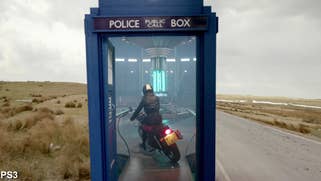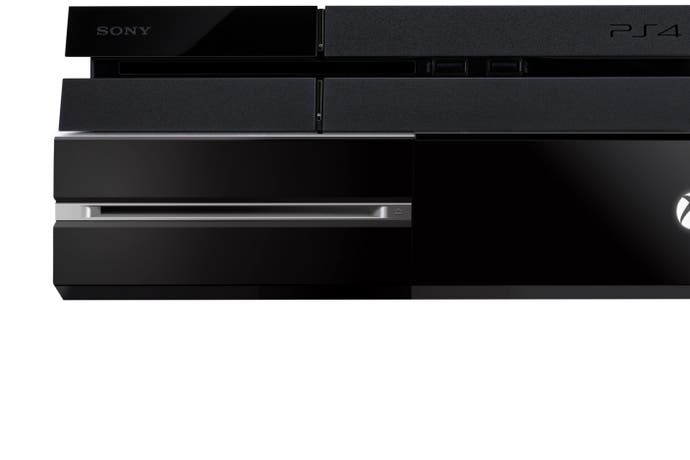PS4 vs Xbox One: which is the better media player?
Should you just stick with PlayStation 3?
This article was originally published in February 2014, and much of the information is now out of date. But not to worry - Digital Foundry re-assessed the media functionality of PS4 and Xbox One in December 2014, and you can read the revised piece here.
With the arrival of Xbox 360 and PS3, console manufacturers realised that games consoles could be so much more - they could be the media player that takes centre-stage in your living room, able to deliver movies and TV shows streamed from the internet as well as traditional disc-based entertainment. With the arrival of next-gen console, the potential is there to bring media integration to a whole new level - indeed, that's the core proposition of Xbox One, with PS4 also featuring a rich array of movie and TV services. So the question is, just why do the next-gen consoles appear to perform less capably than their predecessors? Our tests produced some disappointing results, with the PlayStation 3 in particular providing a clearly superior experience overall.
On the face of it, besides the ability to pump live TV through Microsoft's system (a feature that currently lacks the potentially game-changing One Guide functionality found in the US), both machines feature very similar features, such as the ability to play back Blu-ray and DVD discs, along with dedicated apps covering a range of streaming video services, including those exclusive to both Sony and Microsoft.
However, alarm bells start ringing straight away when you realise that neither console offers users the means to play their own media files - either from attached storage or from network shares. These are functions common to the last-gen consoles, but are mysteriously absent in their successors - although Xbox One can receive "stream to" content from Windows 8 PCs. In terms of other user-generated video, it's worth pointing out that the Microsoft console plays burned DVDs but stubbornly refuses to process BD-Rs, while PlayStation 4 happily runs both.
However, it's clear from the outset that both Microsoft and Sony are keen on locking out homegrown (and yes, pirated) content, but in our tests, the lack of functionality and too many bugs impact the support of 'official' material.
Blu-ray playback - a mixed bag
First impressions of Xbox One Blu-ray playback seem positive once all of the updates are out of the way and the bespoke app is installed: the machine loaded up every disc we threw at it, and we weren't confronted by any obvious incompatibilities. Our experience is initially less pleasing on the PS4, with the original release of James Cameron's Avatar crashing to a black screen across two different units after around a minute of playback. Thankfully, we didn't encounter any issues on other discs we tried, and we imagine that problems such as this can easily be fixed with a software update. Still, as first impressions goes, it's not a great indicator of the overall stability of the system.
In terms of actual picture quality, both consoles output a pure 1080p image without artificially changing the source material in any way, meaning colour accuracy, sharpness and detail are identical. Considering that the Xbox One has to convert Blu-rays from digital component to RGB this is great news, restricting any differences to how individual HDTVs handle these sources.















User reports of compromised 24Hz playback on the Xbox One, however, are disturbing for a console so heavily focused on non-gaming usage. 24fps is a core part of the Blu-ray specification, and any modern device worth its salt should be able to correctly handle that frame-rate without issue. Indeed, the PS3 plays back material at 24Hz flawlessly without introducing any unwanted side effects, and we found the PS4 to be equally solid in this regard. And yet we are on shaky ground with Xbox One. Initially we found the machine outputting a solid 24Hz signal free of any anomalies, but testing a number of discs over a two-hour period revealed some serious audio sync issues where the sound would often lag behind the video by a couple of seconds regardless of what audio setting is selected, making films viewed in this mode unwatchable.
At this point in time the solution is to switch the Xbox One to 60Hz when playing Blu-ray discs, but doing so introduces noticeable judder as the 24fps source is displayed unevenly through a 60Hz output - not exactly an ideal fix. In fact, we noticed some judder when using 24Hz playback from time to time, indicating that the Xbox One isn't always correctly handling this frame-rate. Microsoft is aware of these issues and is investigating the cause, but there's so sign of an update to fix it thus far - a particular disappointment given the Xbox One's huge multimedia focus.
Basic 1080p playback is more stable on the PS4, although Sony's system isn't completely without its own quirks. The console struggles to correctly de-interlace progressive 25fps content encoded at 1080i50 without throwing away a small amount of picture information and blending detail from one frame into the next, duplicate image (all of our test consoles output 1080i50 at 1080p50, resulting in each frame being duplicated). Manually switching the console to 1080i shows no improvement, indicating that the machine is internally de-interlacing the signal regardless of the output resolution.
On the other hand, the Xbox One gets the de-interlacing part right, but then converts the 50Hz output to 60Hz causing judder - for every five "native" frames, a sixth duplicate is added. To put things in perspective, the PS3 comfortably handles all high-definition material on disc without compromising the output in any way. And let's not forget that the PS3 also handles 3D Blu-ray movies too - a feature that is currently missing on both of the next-gen consoles.
DVD playback analysis
Moving onto DVD, neither console manages to show standard-definition material in the best light. Playback is serviceable: you get an image that is watchable but doesn't hold up against a decent - but not necessarily expensive - standalone player. The PS4 appears to scale images more crisply than Microsoft's console, although the lacklustre video processing introduces another problem that significantly degrades image quality.












Most DVDs are encoded as interlaced video with progressive flags embedded in the signal to tell the player how to de-interlace the content without any loss of detail, but on PAL discs the PS4 fails to correctly de-interlace the source material, resulting in unwanted jaggies and line twitter. This is a shame given that its predecessor correctly de-interlaces both PAL and NTSC discs, and also allows for unmolested 576p anamorphic widescreen output. Scaling quality on the console is admittedly too soft for our liking, but it holds its own against both the PS4 and Xbox One.
[Update 20/2/14 13:05 GMT] With the release of firmware revision 1.61 Sony has now fixed the de-interlacing issues on PAL DVDs. The correct cadence is detected and the results are dramatic: edges now appear smooth, and far more of the finer details contained within the video stream appear to be resolved. With the botched de-interlacing now gone, the update also reveals that the PS4 scales DVDs to a higher standard than the PS3 and Xbox One, producing sharper images.
Ideally we'd like to completely bypass any console processing in terms of resizing the image and let our HDTV do the work itself, since it stands a good chance of doing a better job. However, this isn't really possible to do on either next-gen console. With the Xbox One you are stuck with the machine's own scaled 720p or 1080p output, while the PS4 only provides a compromised 576p signal that fails to preserve the anamorphic 16:9 presentation contained in the 4:3 encoded video on DVDs.
The Xbox One's complete lack of respect for PAL 50Hz signals across all services - including TV signals from the HDMI input - also extends to playing DVDs, with the machine converting everything to 60Hz. As when viewing live TV through the console, the only way to disable this is to manually force the console into a global 50Hz mode via the dashboard, but then this causes judder in games which are rendered at 60Hz. The situation is far from ideal.








Netflix and LoveFilm - more issues
Both next-generation consoles support a decent line-up of streaming services, including key providers such as Netflix and LoveFilm, although there are a few apps that only appear on one of the next-gen platforms, and some that are absent entirely. For example, Sky Player is nowhere to the found on the Xbox One, which is surprising given that the service forms a core part of the 360's multimedia functionality (Sky itself says there are no plans for Xbox One integration). BBC iPlayer is also missing from the Xbox One repertoire, though it has made an appearance on PS4.
The PS4 and Xbox One support native 1080p for Netflix and LoveFilm by default, and video quality for each service is mostly identical across these platforms, bar small differences in colour temperature and saturation. The PS3 now also offers up native 1080p streams for LoveFilm, matching the two next-gen consoles. Impressively, both services feature similarly high quality video encoding and minimal compression artefacts at 1080p, as long as the connection stays stable.
With the Xbox One, Netflix playback during our testing kicks off to a decent start, but after around 10 minutes we noticed that the video stream began to judder, and then a few minutes later the audio dropped out of sync with the picture, with the problem intermittently reappearing across different films we tried. LoveFilm streams are also affected by unwanted judder, although the issue was a little more subtle and occurred less frequently. Thankfully, we encountered no audio sync issues, but we were only able to extract stereo sound output from the console using this service - despite forcing DTS output. On the plus side we had no trouble extracting 5.1 DTS output when using Netflix.












On the PS4 we find Netflix playback smooth and free from any lip-sync issues, although from an audio perspective we could only extract a stereo output via both optical and HDMI, even though the service is supposed to support surround sound on the platform. Interestingly, we see the same problem on LoveFilm - again, stereo-only sound - but on top of that we have some serious problems with stutter during playback, almost like video is speeding up to compensate for the judder/uneven frame cadence while maintaining audio sync. It's hugely distracting and in our opinion makes the service unusable at this point. The biggest problem is that these bugs are frequent, though they appear intermittently, so major issues can simply crop up after a few minutes of solid playback.
Once again, the PS3 powers through these services without nearly as many issues. We couldn't get surround sound output from LoveFilm working on the console, but at least the audio stayed in sync with the video at a steady, smooth pace. Curiously there have been reports of inconsistent video quality across both services on the next-gen consoles, with streams breaking up into a stuttering low-resolution presentation. Over the past few weeks we encountered this variable video stream issue across multiple devices, suggesting to us that the problem is perhaps related to available bandwidth and connection issues - perhaps on the service side - rather than a deficiency in how consoles handle the incoming video stream.
Xbox One vs PlayStation 4: which is the better media player?
It's early days for the next-generation consoles and right now both Sony and Microsoft are still working on getting a number of features up and running on their respective platforms, indicating that neither system was truly finished in the run-up to launch. With Microsoft in particular, we understand that resources were strained owing to the last minute decision to drop the cloud-based DRM in favour of a disc alternative, necessitating a large repurposing of internal resources. But the bottom line is clear - across a range of media tests, both Xbox One and PS4 have their issues, while the last-gen PlayStation 3 copes brilliantly in almost all scenarios.
It's Xbox One's poor showing overall that saddens us. This is a piece of hardware built from the ground up to be the centre-piece of the living room - but its innovative OneGuide TV functions have no support outside of the USA, there's zero respect for 50Hz content and there are fundamental problems with playback of disc-based media, while we have issues with the all-important Netflix client, which simply isn't fit for purpose in its current state.
"If your primary media consumption lies with 1080p Blu-ray, the PS4 is generally up to the task, but its predecessor offers a better all-round experience."

If your primary media consumption lies with 1080p Blu-ray, the PS4 is generally up to the task, performing as well as any standalone player in this regard, bar the odd incompatibility issue. However, the console's handling of DVD content [Update: mostly resolved now in firmware 1.61] and 1080i Blu-rays will upset the purists given Sony's previous media focus with the PS3, which generally does everything right. However, it's clear that of the two next-gen machines, the PS4 offers the preferable experience right now in terms of general usage - even though there are some issues with the key Netflix and LoveFilm apps.
With that in mind, it's currently hard to give a concrete endorsement to either next-gen console as a direct media hub replacement for the PS3 when there are so many issues. Some of the intermittent bugs are annoying to deal with and make the whole experience more frustrating than it should be, and the lack of quality assurance in general is disappointing - even basic testing shows up some serious issues that shouldn't have made their way into a shipping product, especially on Xbox One. This is a shame considering that picture quality for 1080p content is accurately displayed on both machines, and there has been some thought into the number of configurable audio/video options available on each system.
With a bit more time and work we could see the PS4 and Xbox One deliver an even more engaging entertainment experience than previous consoles, merging gaming, user-uploaded content, film and TV into one bespoke package that complements the modern loving room. But as of now, just getting the core functionality completely nailed would be a start - and in that respect, the stalwart PlayStation 3 covers all bases.








